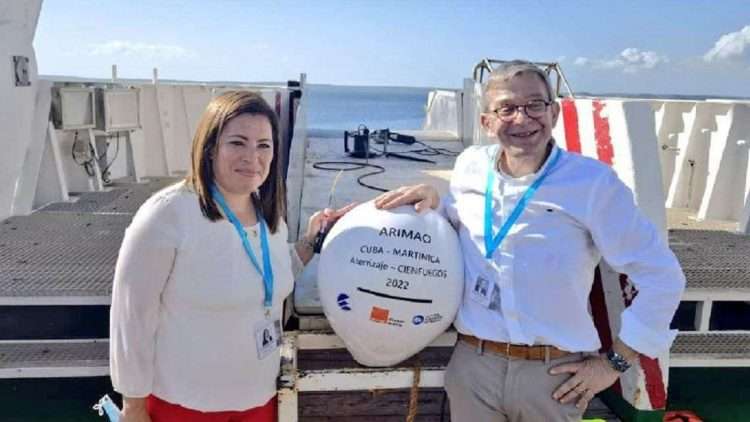The connection of the Arimao underwater cable, which will link Cuba with Martinique, began this Thursday in the Tricontinental Port of Cienfuegos, according to the official newspaper Granma.
The signing of the agreement between the Cuban Telecommunications Company S.A. (ETECSA) and the French company Orange S.A. marked the beginning of the technological operation for which the cable ship Pierre de Fermat was already on the island, which, according to the information available, had arrived in Cienfuegos on the 7th from Fort de France, Martinique.
The cable is 2,500 kilometers long and once loaded on the ship will begin the installation process, which would last a few weeks. Jean-Luc Vuillemin, president of Redes Internacionales de Orange S.A., pointed out that, in parallel, the construction of a station that will house the technical services was carried out.
For Orange S.A. the process of connecting an underwater cable is preceded by studies carried out by an oceanographic vessel. It maps the seabed in different routes and from there they design the cable and order it from the manufacturers, according to statements by Vuillemin to Outremers360 in 2019, after the French company worked on a project that linked Guyana with Martinique.
“Once done, we have to lay the cable, and for this we have a special tool that is a fleet of ships grouped in a company called Orange Marine,” he said.
Due to the complications it brings to the environment, the Cuban authorities point out that the protection of the marine ecosystem will be taken into account at the Arimao facility to avoid affecting areas with large concentrations of plants and the spawning periods of leatherback turtles (Dermochelys coriacea).
“It is an infrastructure that has good service availability in general. But it is an infrastructure that lies on the seabed along thousands of kilometers without any particular surveillance. Cables are inevitably uprooted by anchors, trawls, underwater earthquakes, etc. That is why at least two cables are needed. With one cable, the situation is not satisfactory, it is when you have two that you start to breathe. Three cables is even better,” said Luc Vuillemin in the aforementioned interview.
Cuban Deputy Prime Minister Jorge Luis Perdomo told Granma that the Arimao project is a sign of the government’s will to continue expanding the international communications system of the archipelago, in order to advance in the process of computerization and digital transformation of society. The capacity or cost of the cable has not been disclosed.
Perdomo added that, among the benefits of this project, is the diversification of the country’s international connectivity, and stressed that the realization of Arimao will complement what is currently achieved through a single route of this type in the country: the ALBA-1 system, fruit of joint work with Venezuela.
Cuban Minister of Communications Mayra Arevich Marín stressed that Arimao “is a dream come true, it contributes to the compliance of the National Economic and Social Development Plan until 2030 and will offer Cubans more and better connectivity.”
The event occurs shortly after the U.S. government urged the Federal Communications Commission to deny a request to establish a connection between Cuba and the United States.










